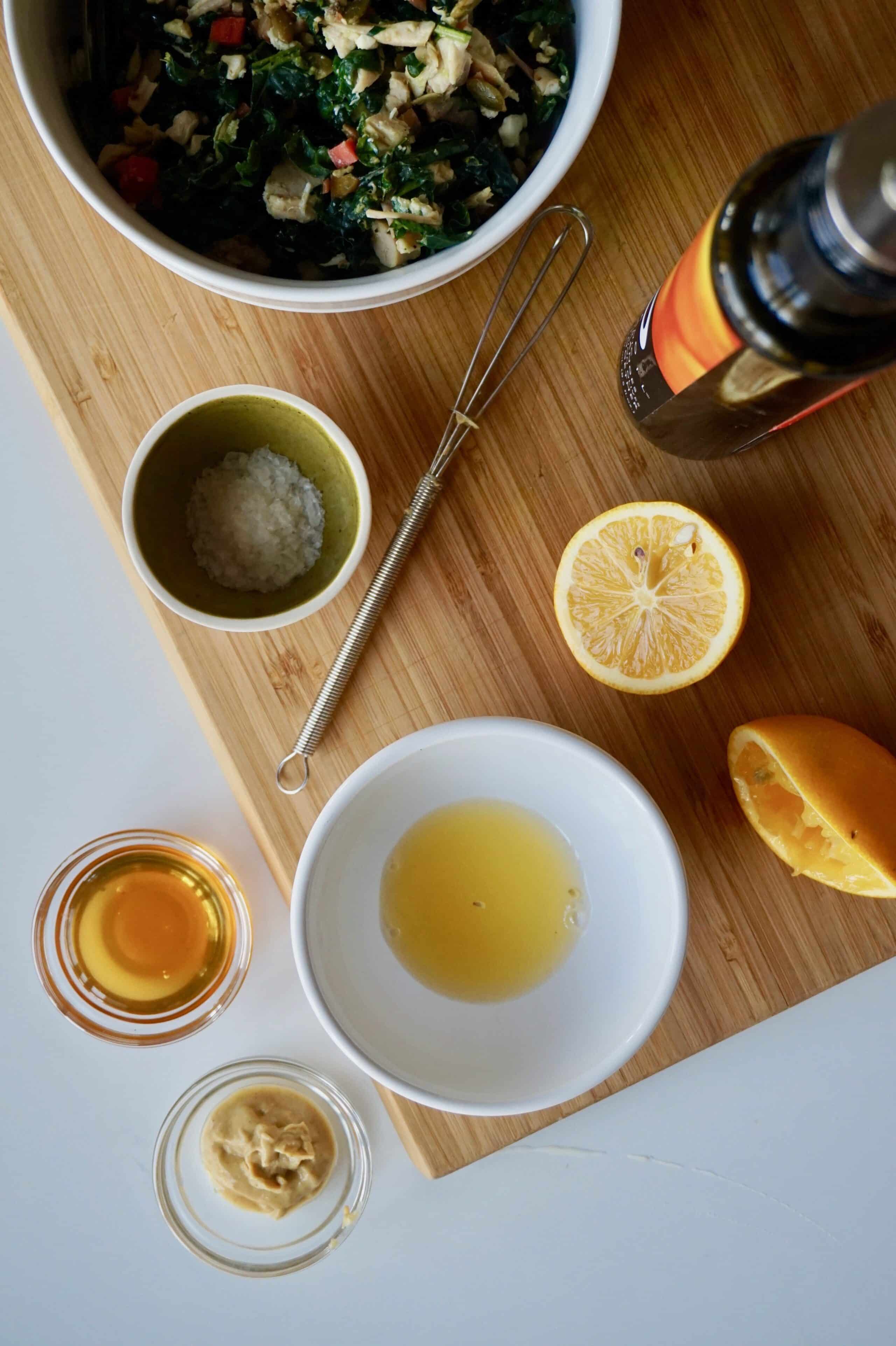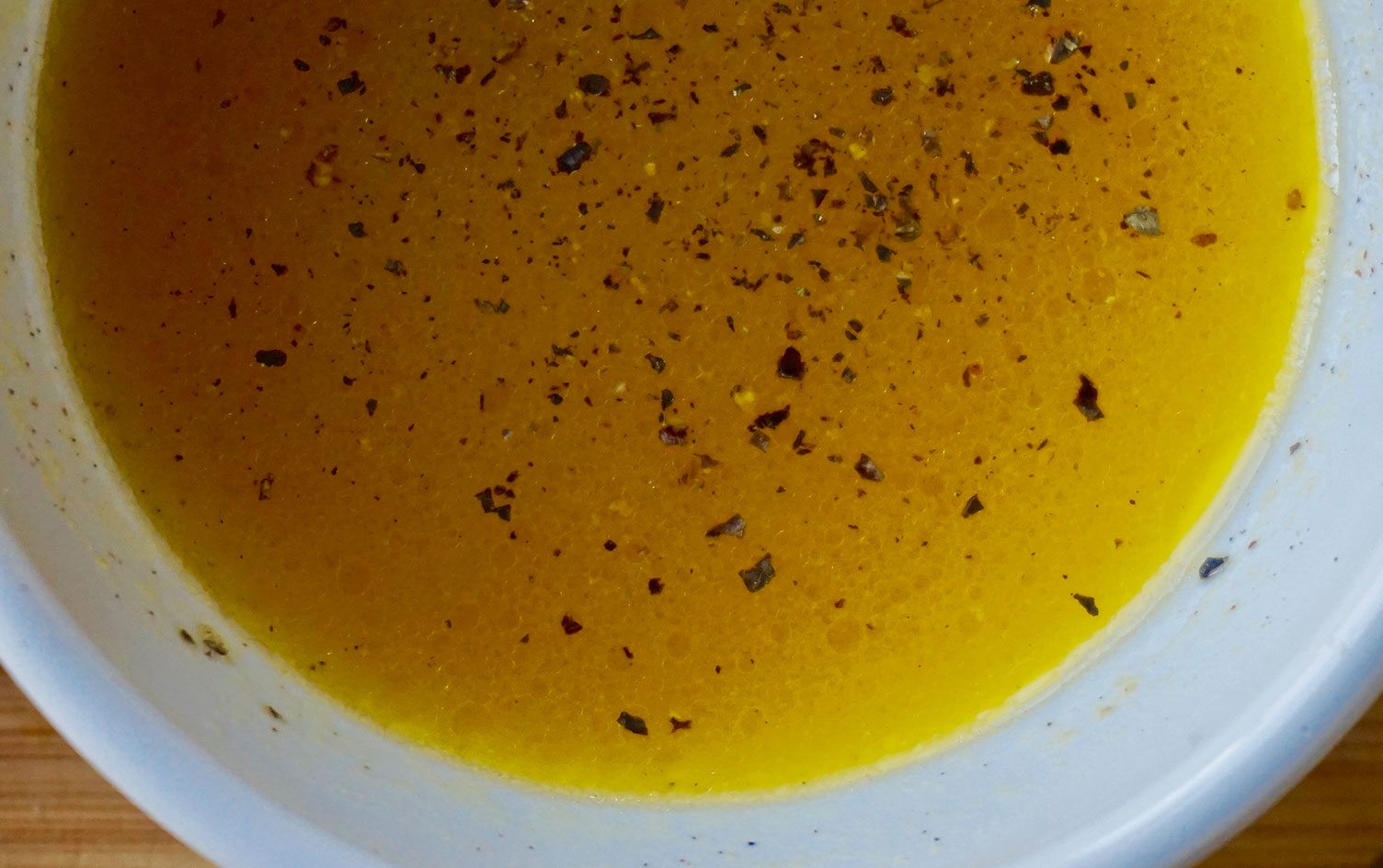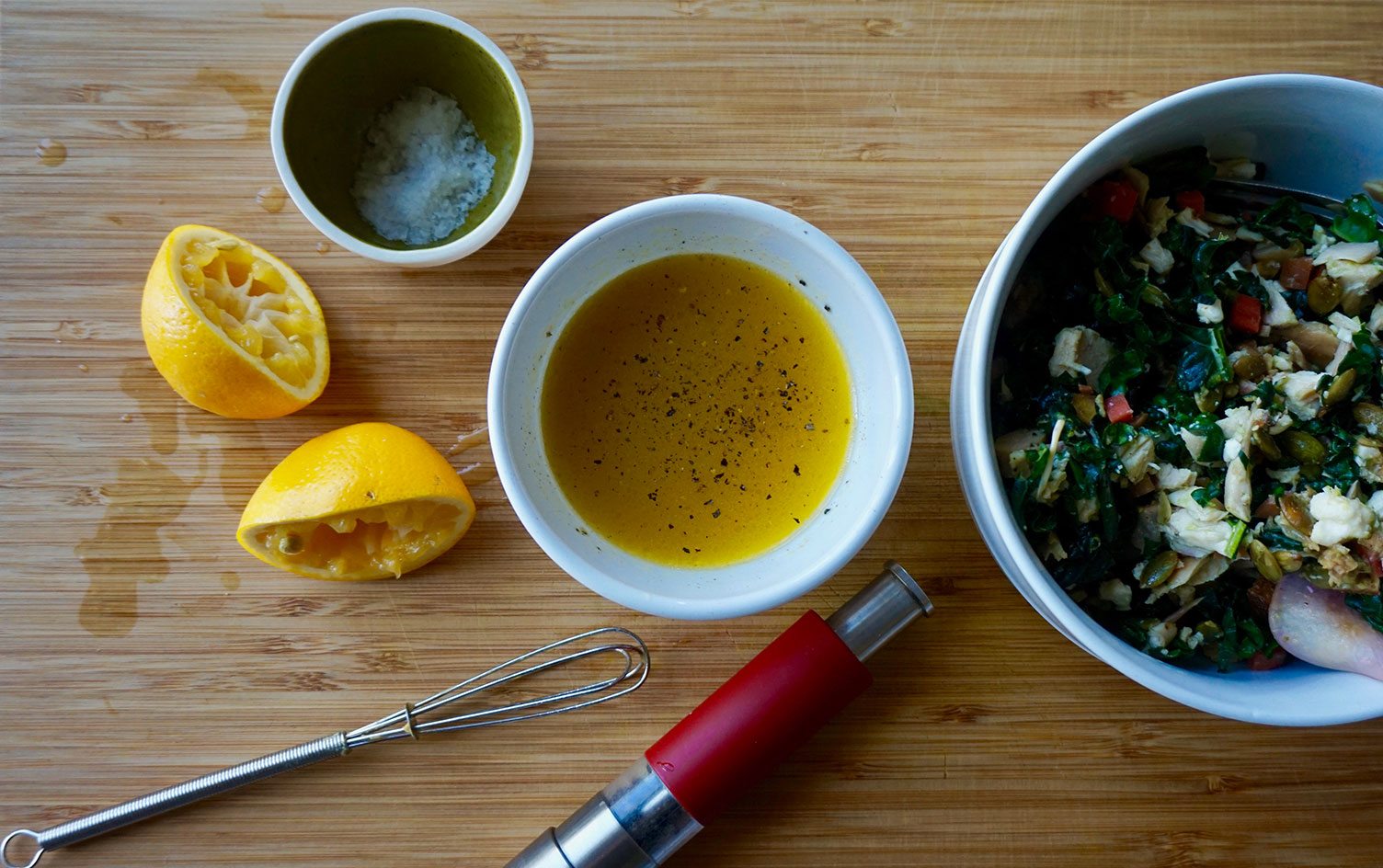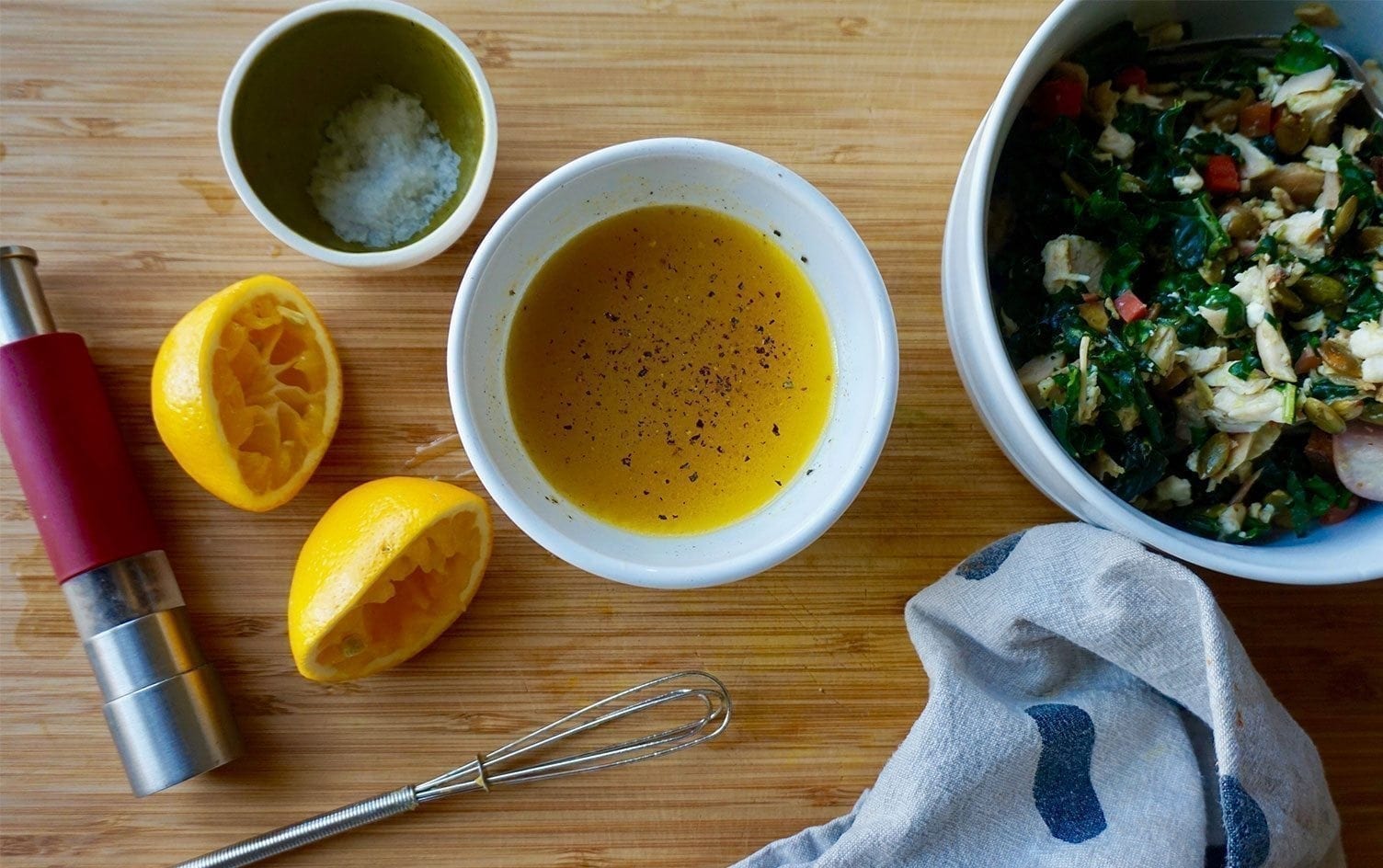If you’re still buying bottled salad dressing, you’re missing out on one of the easiest, least expensive ways to make fresh, creative meals — and to keep out the preservatives and fillers that sneak into our diets. Making your own vinaigrette is easy. You don’t even need a recipe; just this easy-to-follow formula for success.
THE BASIC VINAIGRETTE FORMULA
Vinaigrettes are composed of two ingredients: typically one part vinegar or acid, mixed with 3–4 parts oil. You don’t need to use a measuring cup and you can use whatever ingredients you have on hand. Memorize this ratio and start getting creative!
For example:
1/4 cup cider vinegar + 3/4 cup olive oil
or
1 tablespoon of vinegar + 3 tablespoons olive oil
CHOOSING OILS AND ACIDS

Selecting tasty oils and acids adds intrigue to your vinaigrette. You can be as fancy or as basic as you want. Flavored olive oils are easy to find in your grocery aisle, specialty store or even Trader Joe’s. Walnut oil, hazelnut oil, avocado oil and even sesame oil add interesting flavors. Experiment to find your favorites.
The same is true with vinegars and acids. Balsamic vinegar comes to mind for many of us when we think of vinaigrette, but switching it up with cider vinegar, coconut vinegar, rice vinegar, lemon or grapefruit juices takes your salad to a whole new level.
With strongly flavored oils and acids, be sure you like the flavors before mixing them in a dressing. You may choose to use a combination of oils and acids to get the balance right — for example olive and hazelnut oil, or lemon juice and rice vinegar — in the same dressing.
SEASONING YOUR VINAIGRETTE

While oil and acids are the base of your vinaigrette, a flavorful addition makes your dressing special. If you’re new to making dressings, start with salt and pepper. From there, you can mix in other ingredients. Try a tablespoon of honey, maple syrup, marmalade or even jam. Add a couple of teaspoons of dijon mustard or harissa paste if you’re looking to spice it up. You can also add chopped shallots or green onions and dried or fresh herbs. It’s hard to go wrong with vinaigrettes — experiment with your own tastes and preferences and learn what you like.
MIXING AND STORING YOUR VINAIGRETTE

The method for mixing a vinaigrette is as easy as the ingredient list. Whisk together the ingredients in a bowl, shake it together in a jar or blend it in a food processor for larger batches. If you’re making vinaigrette for a single salad, whisking it together in a bowl is the best approach. For larger batches, you can shake it together in a jar, and if you’re using whole fruit or herb ingredients, you may want to blend it with a food processor. Be sure to dip a pinky in and taste your vinaigrette as you’re mixing to ensure you have the flavors balanced.
Store your vinaigrettes in a jar or other container with a tight lid so that it’s easy to shake up again when you need it. It’s a good idea to keep it in the refrigerator (especially if you used fresh fruit juices or other ingredients). Vinaigrette lasts up to five days.




